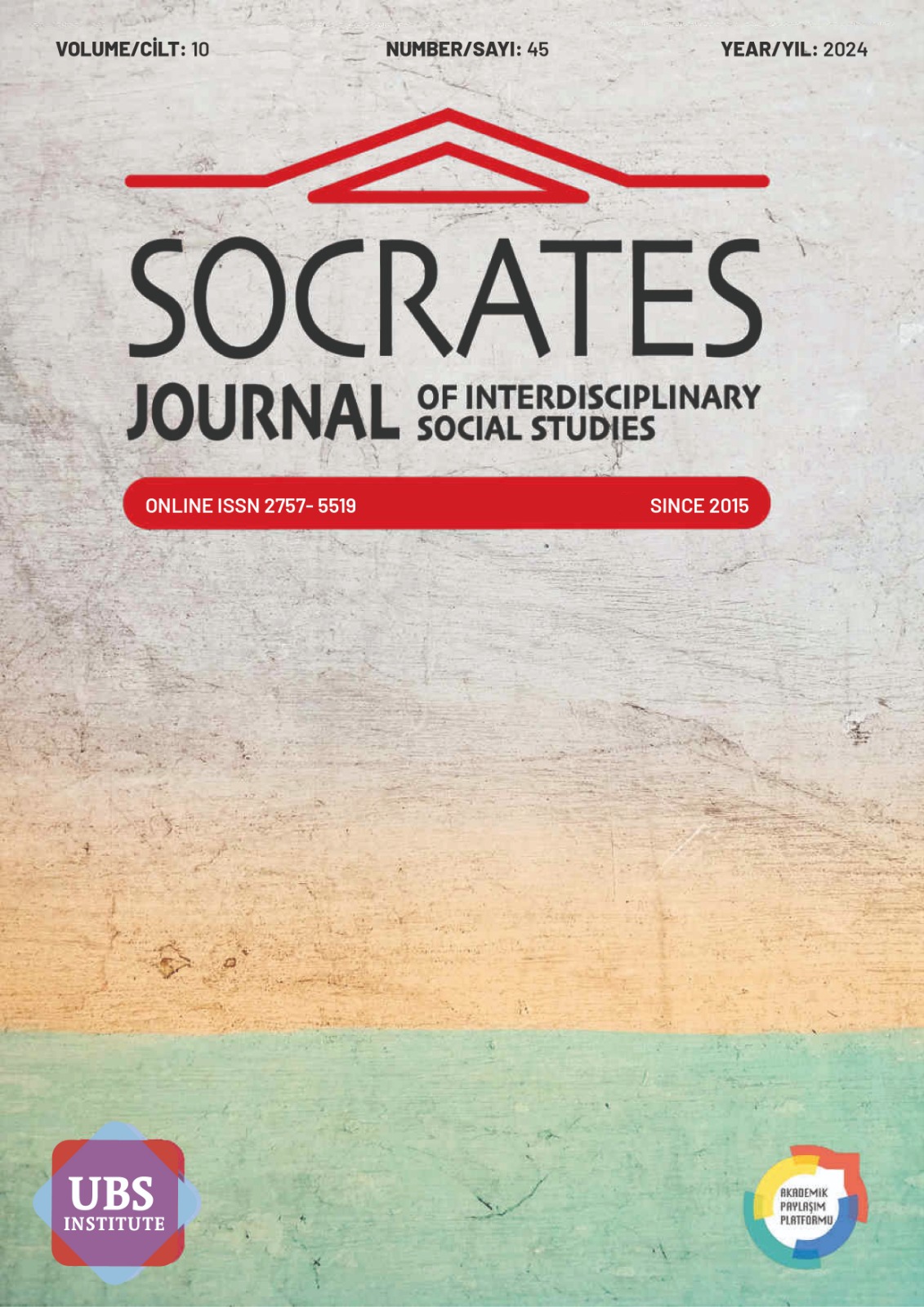A Fusion Dramaturgy: Nightmare of Season
A FUSION DRAMATURGY: NIGHTMARE OF SEASON
DOI:
https://doi.org/10.5281/zenodo.13691456Keywords:
Nightmare of Season, Narration tradition, Theater Tem, Contemporary Turkish theater, Fusion dramaturgyAbstract
This article goals to examine the play Nightmare of Season (Sezonun Kabusu), created by Tiyatro Tem (Theater Tem) in 2014, based on Miss Julie by Strindberg under the umbrella of fusion dramaturgy. Miss Julie has written by the Aristotelan dramaturgy structure in the age of Naturalism. Its conflict consists of the dilemmas in the male-female relationship, which belong to human nature and the sociological reality of the period, between class difference and the instincts of human biology. In order to make visible these dilemmas the Freytag's Pyramid technique has used in the play, which is one of the examples of the tectonic style and where intellectuality is extremely dominant. On the other hand Nightmare of Season is a frame text created around Miss Julie, which is about an actor (Sezo) trying to play the role of Miss Julie. By trying to act Julie Sezo forgets her words and then starts to talk about her performancen with spectators or her performanse is continuoisly interrupted by her nightmares creatures to narrate the story of Miss Julie. In fact these role plays, ignoring of fourth wall are the features of Turkish traditional theatre, named Ortaoyunu. The Nightmare of the Season, which contains the characteristics of both form, has strong indicators of Turkish tradition theatre also was established with the dramaturgical features of Western theater in both form and content. Consequently the play, which was produced with the belief that the traditional can survive by transforming, has been named as a fusion dramaturgy in that it brings into question the issues of reality in theatre, whether the fourth wall established between the stage and the spectator’s area can be established between the two actors on the stage, and whether the tradition should be continued by continuing the same or by transforming the existing.
References
And, M. (1985). Türk tiyatro tarihi. İstanbul: İletişim Yayınları.
Brocket, O.G. (2017). Tiyatro tarihi (Haz. İnönü Bayramoğlu), Ankara: Dost Kitabevi.
Carlson, M. (2008). Tiyatro teorileri (Çev. Barış Yıldırım & Eren Buğlalılar). Ankara: De-Ki Kitabevi.
Karabulut, T. (2015). Dramatik yapının analizinde freytag tekniğinin kullanımı. Tiyatro Araştırmaları Dergisi, 39, 37-55.
Konur, T. (1995). Ortaoyunu. Tiyatro Araştırmaları Dergisi, 12, 47-51.
Kudret, C. (2007). Ortaoyunu. İstanbul: Yapı Kredi Yayınları.
Metin Basat, E. (2023). Ortaoyunu tekerlemelerinde anlatı gösteri birlikteliği. Milli Foklor, 18(137), 37-47.
Nutku, Ö. (1999). Uzatmalı Gerçekler. İstanbul: Remzi Kitabevi.
Pekman, Y. (2010). Çağdaş tiyatromuzda geleneksellik. İstanbul: Mitos Boyut Yayınları.
Selen, A. ve Aktaş, Ş. (2014). Tiyatro Tem Oyunları 3. İstanbul: Mitos Boyut Yayınları.
Strindberg, A. (2014). Tiyatro tem oyunları 3 içinde Matmazel Julie (Haz. Ayşe Selen & Şehsuvar Aktaş). İstanbul: Mitos Boyut Yayınları.
Şener, S. (2006). Dünden bugüne tiyatro tarihi. Ankara: Dost Kitabevi.
TDK, Türk Dil Kurumu Sözlükleri, https://sozluk.gov.tr/
Toksoy Çeber, D. (2010). Dramatik yapıda çatışma. Güzel Sanatlar Enstitü Dergisi, 24, 147-163.
Downloads
Published
How to Cite
Issue
Section
License
Copyright (c) 2024 Socrates Journal of Interdisciplinary Social Studies

This work is licensed under a Creative Commons Attribution 4.0 International License.


